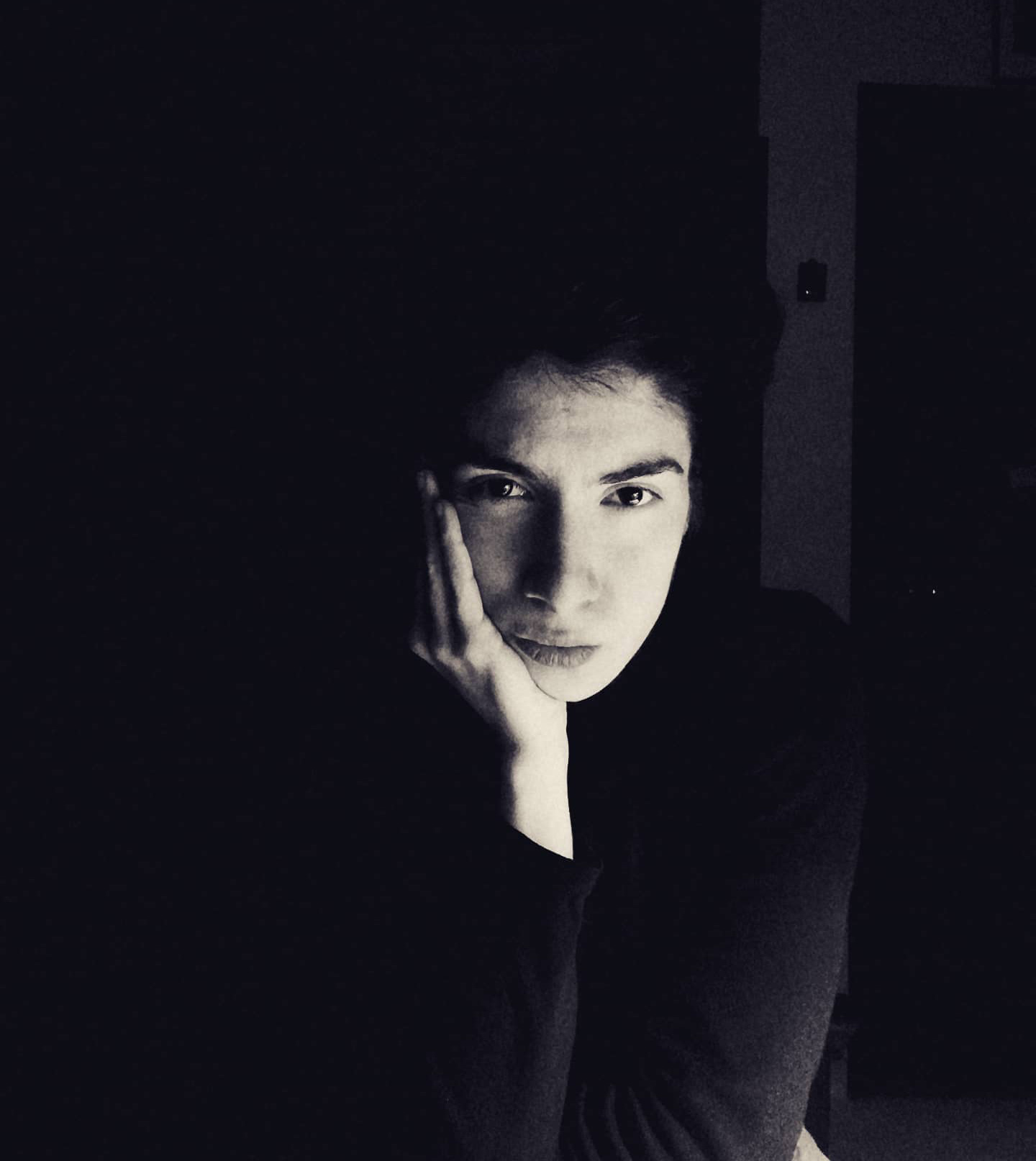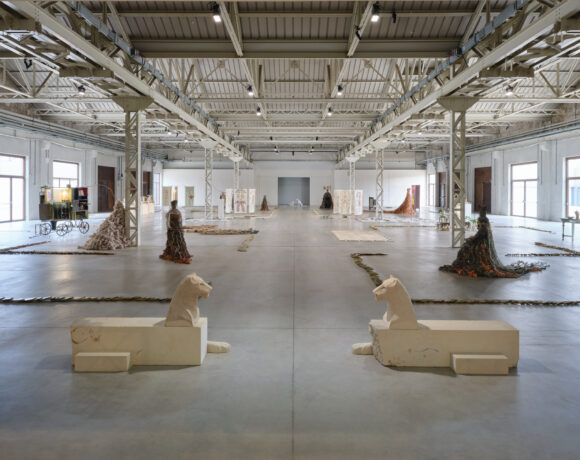It is now one of the countless non-Sundays during coronavirus time, when B, fervent student who still savor the meaning of the word ‘idealism’, receives a call from R, her old professor of Aesthetics, a teacher but now a friend thanks to the benefits of the natural passage of time.
“How are you?” B would like to answer “badly” but suddenly a dormant sense of morality catches her and freed herself from all subjectivity: “Well … Like everyone else, well …” Useless efforts, again an inadequate answer to the question, she thinks. “But are you still reading that book?” “Yes why?” – “But what page are you on?” – “Two hundred and thirty” – “… two hundred and thirty? But do you read only that? “, The conversation on books and respective quantities of pages goes on for a little while: “A last article came out, did you read it? ” (A is a highly respected philosopher), B asks R. There are fires and flames between the two until the match ends with: “There is little philosophers to do now” … No reply. B surprisingly finds herself in agreement with R.’s frozen conclusion. The idealistic and passionate feeling has naturally given way to a strange sense of wariness …
Faced with the seriousness of the situation that the course of history is placing before our eyes, a feeling of extreme caution relates us to issues other than those that every day reach us more or less violently through all the media. The inevitable comeback of the value of ‘life’ stands out forcefully in front of the perception of an invasive terror, a consequence of the possibility of a foreseeable death: the individual death, of ourselves, or the death of the community. However, the “other themes” grow luxuriantly, according to nature and physiology.
Among these, what interests us is obviously art. Admitted that at the time of the first coronavirus decree (March 4) there were still those who, unjustifiably hopeful and proudly optimistic, continued their life with assiduous artistic frequentations from the simplest and most personal aperitifs to the most official evening openings (prolonged aperitifs too, albeit from the aesthetic appearance), after the third and decisive decree of 9 March, a phenomenon has come to the fore.
Countless series of virtual artistic contents have made their appearance on all social networks, live streaming has quickly and easily replaced the real openings, “virtual walks” have become possible in all the major Italian museums, it is even possible to visit Raphael’s long-awaited exhibition at the Scuderie del Quirinale.
In fact, from small private exhibition initiatives (galleries, single artists), the boom has reached MiBact, becoming official as a real mass episode, initiating a sort of collective bulimic cultural attitude that forces the most interested to stay connected and updated with respect to each new artistic-cultural streaming, convincing us that in this way, even in twenty or one hundred square meters, they can continue to stay updated, informed, naively active. What happened was that in short time the work of art was replaced by its appearance. The need for image has become urgent, necessary for the continuation of the narration that more or less slowly continues in the “world of art”.
The stuntman has taken the place of the leading actor. Maybe it was obvious, maybe it was natural or simply planned in the course of things, of course. The fact is that the reflection on the subject arises almost dutifully and puts us like never before, in the face of the lucid awareness of the loss of the aesthetic experience. The most optimistic, friends of social-genesis would rightly speak not of a loss but of an inevitable change. But the observation remains, and if before the coronavirus there were still some worldly adepts / frequenters / amateurs of the art society believed in the existence of a fragile idealistic remnant of the aesthetic experience made possible by the art work – something to be preserved instantaneously – at present we can ascertain its most evident end.
The pandemic leaves us even more helpless in the face of a status quo that undresses us of all romanticism and which the most nostalgic perhaps still struggled to recognize as such. That oversensitive ‘rest’ that perhaps still with trust the living contact with the work gave us, goes to be blessed and to replace it, a hungry desire for virtual enjoyment appears, a primary and easy satisfaction that deludes us that we can experience the work everywhere, at any time, in any way as long as the image persists, necessary for a fruition that becomes almighty. The image takes the place of the work to satisfy the most greedy, in all respects, among our contemporary needs.
But the stasis that is violently imposing itself in each area of life that concerns us could perhaps, in the field of art, become a precious phase. We recognize to ourselves that the benefit we derive from the greedy use of the “artistic” image satisfies the hunger for cultural information that has been supporting all the energies of the media for years, including the “art magazines”, to bring ahead the spasmodic succession of events and happenings that delude us of a culturally passionate but sterile reality, unproductive of long-term enthusiasms, generator of fatuous fires.
However, the illusion of being suddenly all attuned to the cultural system of our country makes us believe that we support it and promote it with daily clicks: it is reassuring. We keep telling ourselves that in the time of the coronavirus we rediscovered Italian reading, cinema and museums if this psychologically defends us from what is happening. Or we find that even culturally we simply support the nature of consumers that the capitalist economic model has imposed on us: we have become good, very good cultural consumers.
Now, we certainly should not favor the interruption of any virtual sharing, it would mean adopting a decadent, obsolete, technically obtuse attitude. Moreover, one can not take more than the faded and dusty cliche of the reflective intellectual, of the “different one”. It is only a matter of moving with caution, hand in hand with the awareness that despite the apparent and vaunted end of the aesthetic experience, this is not replaceable and never will be, not even at the time of the coronavirus.
 Giovanni Anselmo, Entrare nell’opera,1971
Giovanni Anselmo, Entrare nell’opera,1971
 Giulio Paolini, Mimesi,1975
Giulio Paolini, Mimesi,1975
 Luigi Ghirri, Argine Agosta Comacchio,1989 © Eredi di Luigi Ghirri
Luigi Ghirri, Argine Agosta Comacchio,1989 © Eredi di Luigi Ghirri
 Luigi Ontani, Tappeto volante, 1975
Luigi Ontani, Tappeto volante, 1975
 Nam June Paik, Electronic Superhighway Continental U.S., Alaska, Hawaii,1995
Nam June Paik, Electronic Superhighway Continental U.S., Alaska, Hawaii,1995

Giulia Giambrone (Rome, 1994) graduated in History of Contemporary Art with a thesis in Aesthetics. She has been following for years the work of Luigi Ontani to whom she has dedicated the essay Luigi Ontani in Teoria. Filosofia, Estetica, Psicoanalisi nell’opera e nell’artista. (Alpes Ed., Rome 2019). She has been intern at the Peggy Guggenheim Collection (Venice) and La Galleria Nazionale (Rome). She is curator between Rome (Fondamenta Gallery) and Venice (Spazio Norbert Salenbauch). She is mainly interested in the relationship between philosophies and contemporary arts.






NO COMMENT